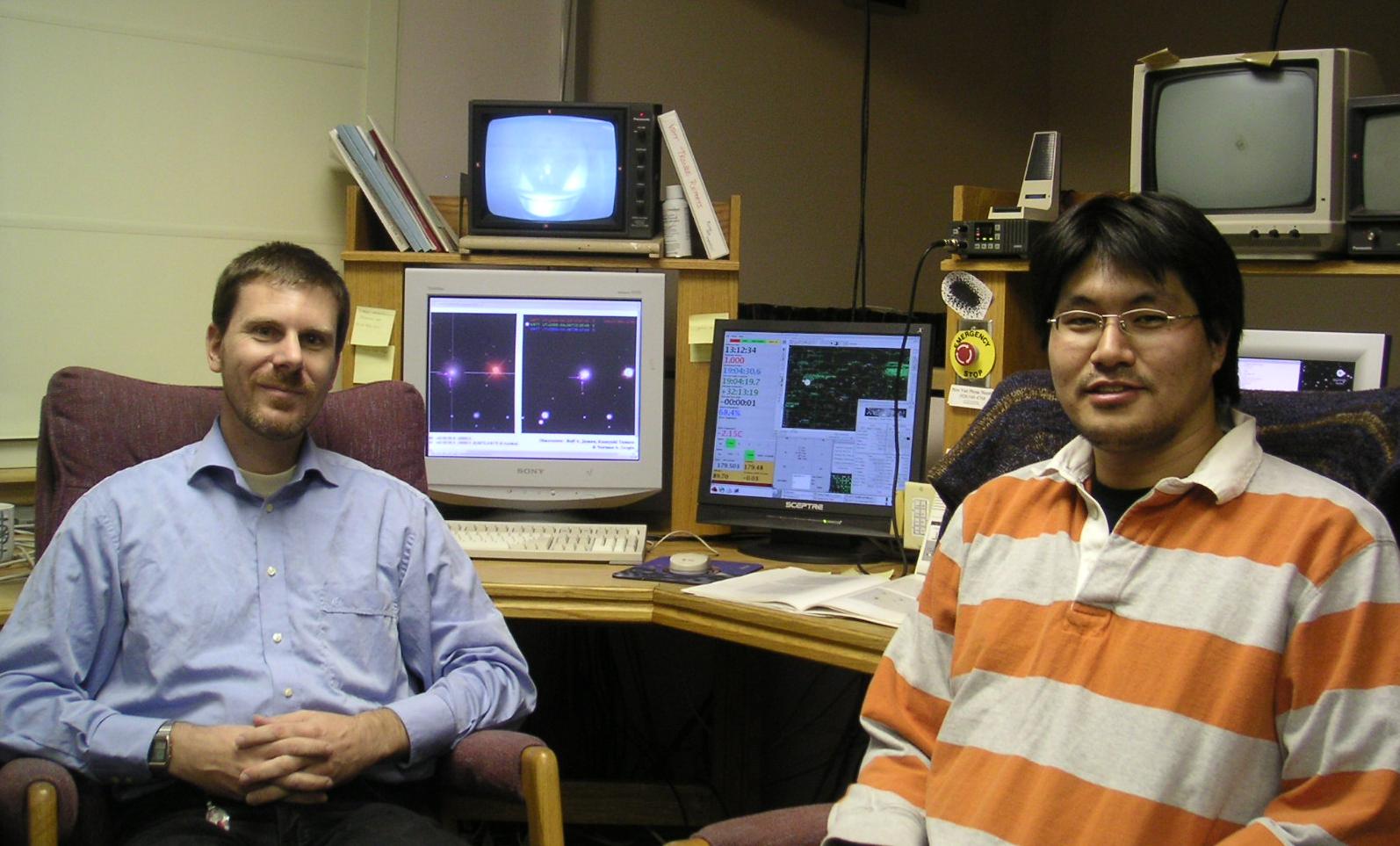|
||
April 14, 2005
|
||
|
On April 2, Arizona State University researcher Rolf Jansen and graduate student Kazuyuki Tamura were operating the 1.8m (5.9 foot) Vatican Advanced Technology Telescope (VATT) atop Mt.Graham, Arizona. They turned the scope to CGCG 223-029, an early-type spiral galaxy undergoing a burst of star formation, as part of a study with collaborator Norman Grogin of Johns Hopkins University. They then captured two 5-minute exposures with the telescope's CCD camera. Jansen noticed a conspicuous point-like object appeared a few arcseconds southeast of the galaxy's nucleus. "It was a typical 'Hmm, that's odd' experience," he told Astronomy. The 18th-magnitude object was stationary on images acquired on subsequent nights. It didn't appear in Sloan Digital Sky Survey images or in an image Grogin took of the galaxy a decade earlier. Jansen and Tamura think they've found a supernova and encourage spectroscopic and photometric follow-up (a PDF finder chart is here).
Chris Corbally, the Vatican Observatory's vice director, says this would be
the first supernova discovered with the telescope. "It's a fun discovery,"
he says, "and adds to supernova statistics and distance determination to
this galaxy." (For more on the VATT, see Astronomy's
March 2005
issue.) — Francis Reddy
April 18, 2005The object was designated SN 2005bk by the International Astronomical Union April 15 (see IAU Circular 8512). Two days later, Mohan Ganeshalingam and University of California, Berkeley, colleagues obtained CCD spectra that confirm 2005bk's status as a type Ic supernova, about 1 week past maximum light, according to today's IAU Circular 8514. — Francis Reddy |
 Rolf Jansen and graduate student Kazuyuki Tamura pose in the VATT's control
room. Courtesy Rolf Jansen
Rolf Jansen and graduate student Kazuyuki Tamura pose in the VATT's control
room. Courtesy Rolf Jansen
| |
|
Glossary | Contact us | Advertising info | About the magazine | Employment |
||
| Copyright © 2005 Kalmbach Publishing Co. | Privacy statement | |
